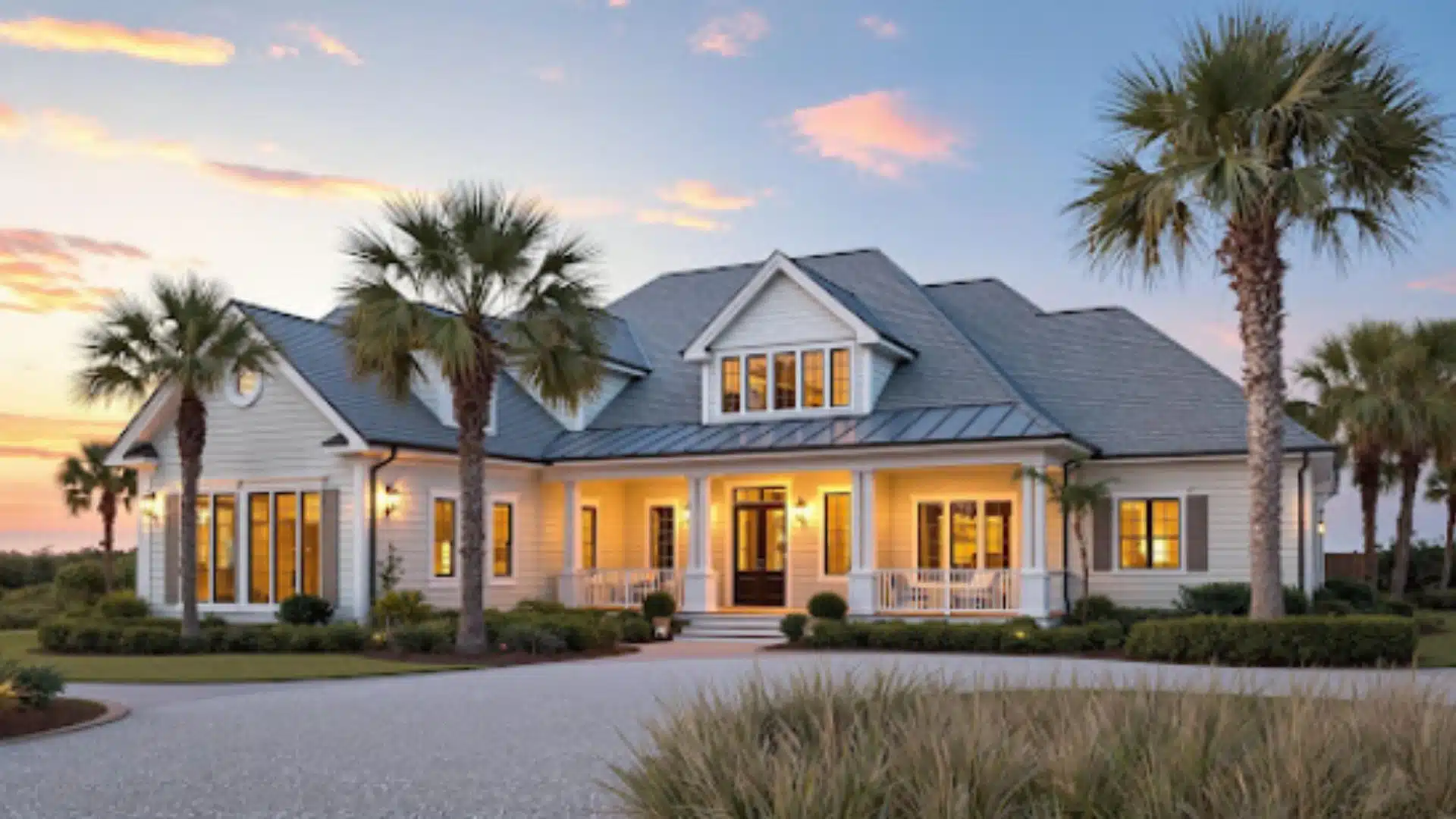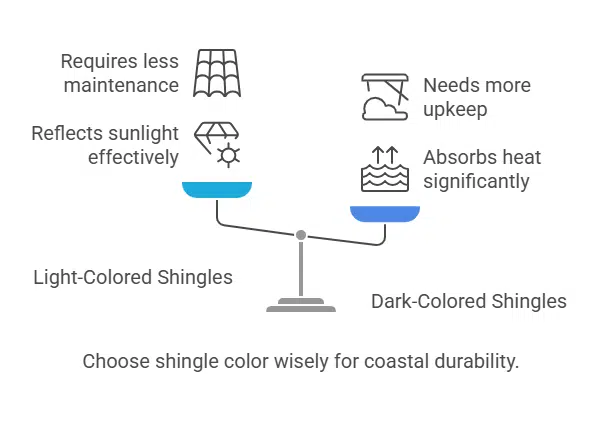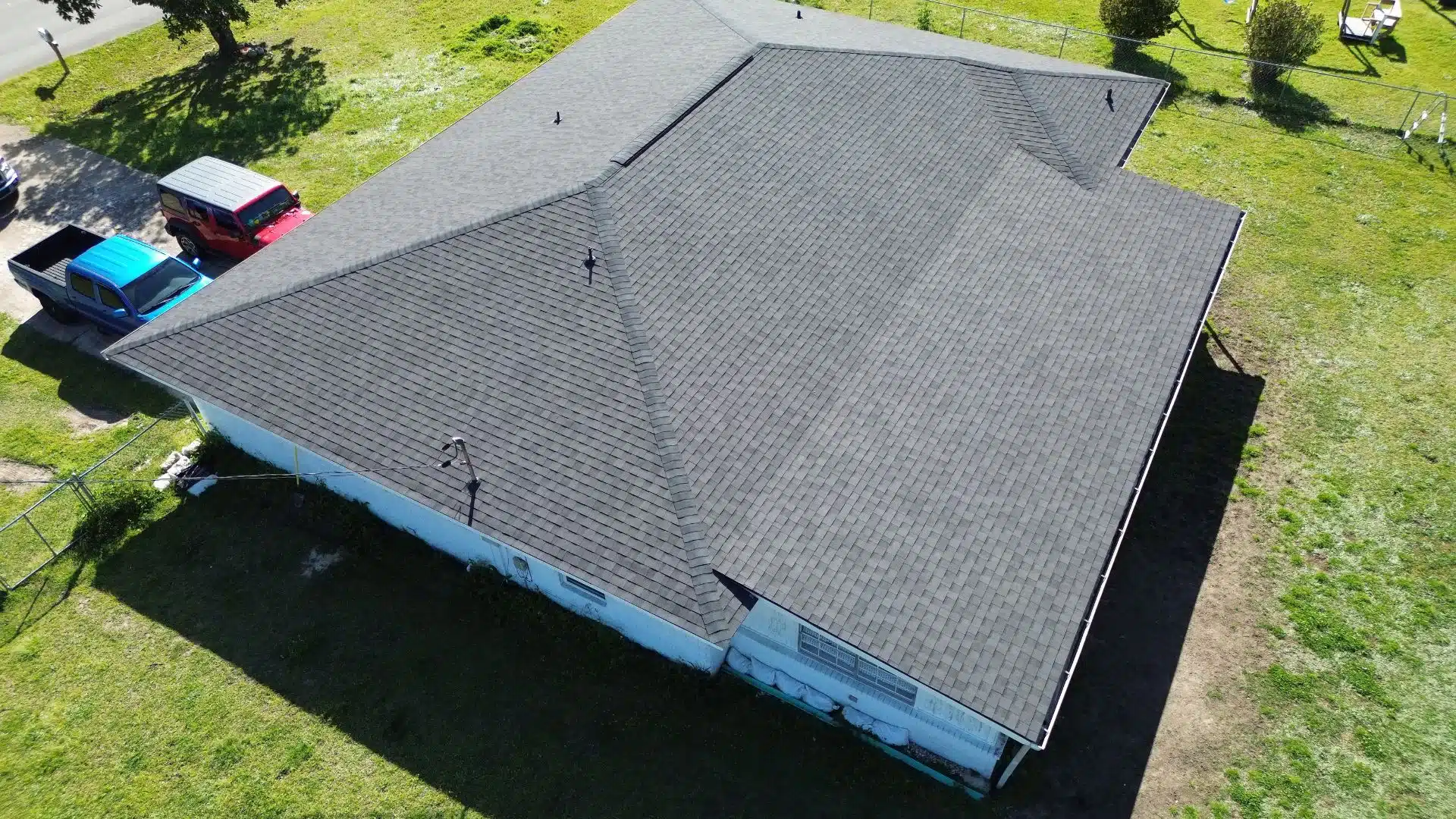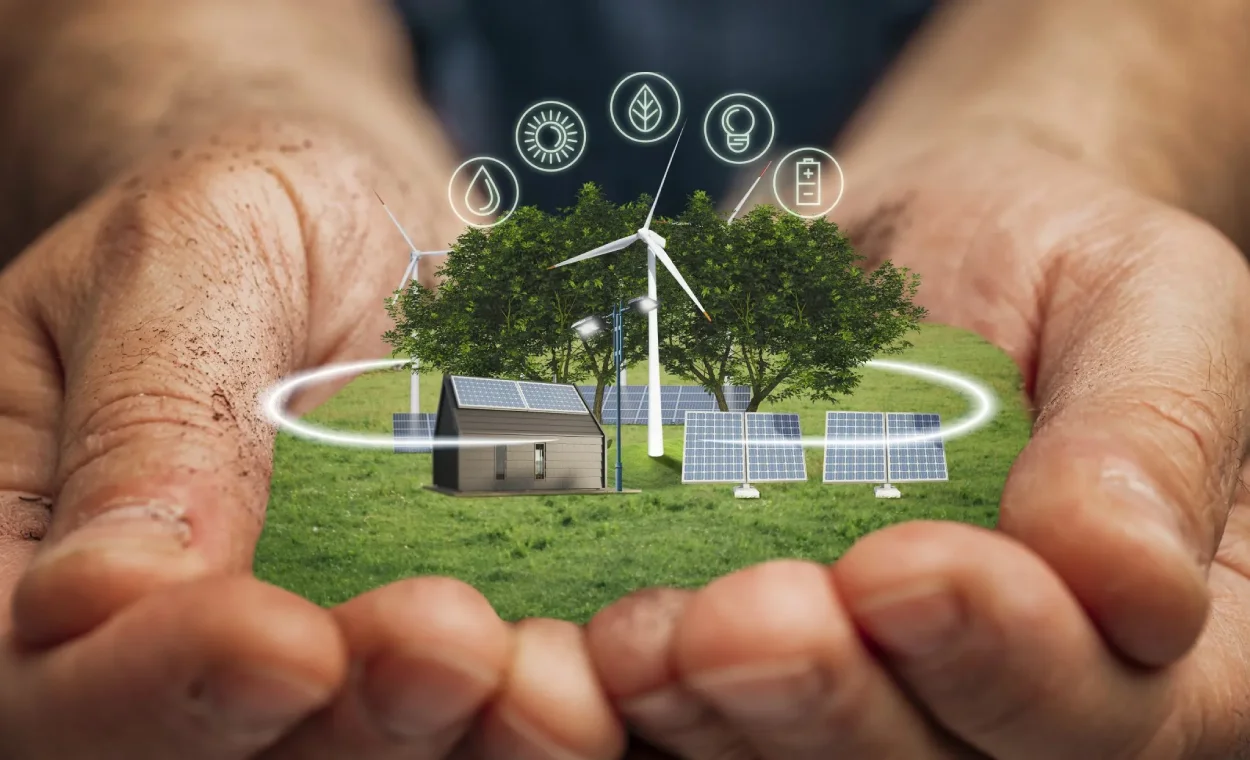Why Choosing the Right Shingle Color Matters
When it comes to roofing in MS Gulf Coast , many homeowners focus on structure, material, and installation quality — but one often overlooked aspect is shingle color. The color of your roof not only impacts the curb appeal of your home but can also influence energy efficiency, durability, and even long-term maintenance costs. In regions like the MS Gulf Coast, where the weather can be both extreme and unpredictable, selecting the right shingle color is more than just a matter of aesthetic preference; it’s a smart, practical decision that affects both your home’s value and your comfort. This blog will go over why The Ultimate Gulf Coast Guide: Choosing Your Perfect Roof Color (That Your Neighbors Will Envy) matters.
Brief Explanation of the Importance of Roof Aesthetics, Value, and Durability in the MS Gulf Coast Climate
The Gulf Coast’s unique climate presents both challenges and opportunities for homeowners. With hot, humid summers, frequent coastal storms, and salty air, your roof must be built to endure. But beyond protection, a well-chosen shingle color can boost the curb appeal of your home, making it stand out for all the right reasons. Whether you’re looking to blend with the natural surroundings or create a striking contrast, the right color can elevate your home’s visual appeal.
Yet, it’s not just about looks. Durability is key — in the MS Gulf Coast, the elements can take a toll on materials. A color that holds up under the region’s heat and humidity can save you from premature fading and costly repairs. The right shingle color will help your roof not only look great but also perform at its best, extending the lifespan of your investment.
Understanding the Gulf Coast Climate
Explanation of the Weather Conditions in the MS Gulf Coast: High Humidity, Heat, Coastal Storms, etc.
The MS Gulf Coast is known for its sweltering heat and high humidity, especially during summer months, which can make your home feel even warmer. This sticky, moist environment combined with frequent rain showers and the occasional coastal storm creates a tough test for roofing materials. The air is also saturated with salt, which accelerates the deterioration of materials, especially metals and some shingles.
Coastal storms are another important factor. From heavy winds to outright hurricanes, your roof needs to stand resilient against the battering it may face year-round. The color of the shingles you choose will not only affect the look of your home but also how they hold up to these extreme conditions.
How the Local Climate Influences Roof Performance, Especially for Shingles
In an area like the MS Gulf Coast, choosing a shingle color involves more than just appearance. Dark colors, while attractive, absorb more heat, which can contribute to higher cooling costs during the intense summer months. Conversely, lighter-colored shingles can help reflect the sun’s heat, keeping your home cooler and more energy-efficient.
Additionally, the salty air and moisture in the Gulf Coast environment can cause fading over time. Lighter-colored shingles might maintain their appearance longer under these conditions, whereas darker shingles might show wear sooner. Understanding how shingles will perform in these unique conditions can guide homeowners to the right color choice that balances aesthetic appeal with practicality.
Factors to Consider When Choosing Shingle Color
Energy Efficiency
One of the most important factors when selecting a shingle color is its impact on energy efficiency. The Gulf Coast’s scorching summers mean that air conditioning is often running full blast. Shingle color plays a significant role in your roof’s ability to either absorb or reflect heat. Darker shades, while visually appealing, absorb more heat, which can lead to higher indoor temperatures and increased energy consumption.
Lighter-colored shingles, on the other hand, reflect more sunlight and heat, helping keep your home cooler. This can reduce the strain on your air conditioning system and lower cooling costs throughout the warmer months. Choosing the right color can make a tangible difference in your energy bills, offering savings while also improving comfort inside your home.
Dark vs. Light Colors and Their Impact on Cooling Costs
Choosing between dark and light shingles has a direct impact on how much heat your roof absorbs. While dark-colored shingles may provide a striking contrast with your home’s design, they can also trap heat, making your air conditioning work harder to maintain a comfortable indoor temperature. In contrast, light-colored shingles reflect sunlight, lowering the heat that penetrates your home and making it easier to stay cool without cranking up the AC.
In the MS Gulf Coast’s sweltering climate, light-colored shingles can significantly reduce your cooling costs, providing both energy efficiency and environmental benefits.
Reflectivity and Heat Absorption
Reflectivity is a key factor in the performance of shingles, especially in hot climates like the MS Gulf Coast. Shingles with higher reflectivity reflect more sunlight, reducing the amount of heat absorbed by your roof. This can help moderate the internal temperature of your home and save on cooling costs. On the flip side, shingles with low reflectivity absorb more heat, which can cause your home to heat up faster and require more energy to cool down.
Aesthetic Appeal
Beyond energy efficiency, shingle color plays an important role in your home’s curb appeal. The color of your roof is one of the most visible aspects of your house, and choosing a color that complements the surrounding landscape, architecture, and even the colors of your neighbors’ homes is essential. The MS Gulf Coast is known for its coastal charm, and a color that matches the natural surroundings can help your home blend seamlessly with its environment.
Whether you’re aiming for a classic, timeless look or something more modern, your shingle color should reflect your style while enhancing the overall aesthetic of your home.

Matching the Home’s Style, Neighborhood Trends, and Personal Preferences
Every home has its unique character. Whether it’s a beach cottage, a modern farmhouse, or a colonial-style house, the right shingle color can either complement or contrast with your home’s architecture. Coastal homes often look great with lighter hues that match the beachy surroundings, while traditional homes might benefit from darker, richer tones.
Additionally, consider neighborhood trends. Some areas have certain shingle colors that are more popular or desirable, which can influence your decision. Ultimately, though, the shingle color should reflect your personal taste, helping to make your home feel like it truly belongs to you.
The Role of Curb Appeal in Property Value
Curb appeal is an undeniable factor in property value. The color of your roof plays a crucial role in how your home is perceived from the street, and a well-chosen color can significantly boost its curb appeal. Whether you’re planning to sell soon or just want to improve the look of your home, selecting the right shingle color can make all the difference in attracting potential buyers or simply enhancing your everyday enjoyment of the space.
Popular Shingle Colors in MS Gulf Coast
Overview of Common Trends and Preferred Colors in the Region
In the MS Gulf Coast, the region’s architectural styles and natural beauty influence the most popular shingle colors. Coastal homes, in particular, tend to embrace colors that blend seamlessly with the surroundings, often reflecting the sea, sand, and sky. Among the most common trends are earthy tones and natural hues, which create a harmonious feel with the coastal environment.
The trend towards neutral shades like gray, brown, tan, and black remains strong, but there is also an increasing interest in lighter colors such as off-white and beige, which enhance energy efficiency by reflecting sunlight. For more traditional homes, dark colors are often favored, giving a sense of elegance and permanence. Meanwhile, for beachside properties, softer shades that echo the color of the sand or water are popular for maintaining a laid-back, natural vibe.
Best Colors to Complement the Local Architecture and Environment
Given the tropical, coastal setting, the best shingle colors to complement the local architecture often lean toward light to medium tones. These shades not only match the aesthetic of the region but also provide practical benefits in terms of energy efficiency and resilience to harsh weather conditions.
- Gray and Charcoal: These are classic and versatile choices that work well with a variety of home styles, from modern beach cottages to traditional homes. They offer a sophisticated look and are great at hiding dirt or discoloration from the salty air.
- Tan and Beige: These warm, earthy tones work beautifully with natural stone or wood elements often found in Gulf Coast homes. Lighter shades are ideal for reducing heat absorption and improving energy efficiency, making them a popular choice for homeowners looking to stay cool during hot summers.
- Brown and Chestnut: Darker hues like brown or chestnut evoke a sense of richness and stability. They pair well with rustic or more traditional homes and can provide a striking contrast to lighter home exteriors, though they may absorb more heat.
- Black: While black is a bold and timeless color, it’s not the most energy-efficient in the Gulf Coast’s sunny climate. It provides a sleek, modern look but tends to absorb heat, which may lead to higher cooling costs. It is, however, resistant to fading and offers a highly polished, upscale appearance.
- Lighter Shades (Off-white, Light Gray, or Coastal Blues): These colors are perfect for those looking to embrace a beachy, airy aesthetic. Lighter shades reflect more sunlight, reducing energy costs, and they help prevent heat from building up inside your home. Lighter colors also have a fresher, modern look that pairs well with the coastal environment.
Pros and Cons of Popular Colors
- Black Shingles
Pros:
- Classic, elegant, and versatile.
- Resists fading and discoloration from the sun and elements.
Cons: - Absorbs more heat, leading to higher cooling costs in the summer.
- Can be prone to showing dirt and debris more than lighter colors.
- Classic, elegant, and versatile.
- Brown and Chestnut Shingles
Pros:
- Warm, inviting, and complements traditional or rustic homes.
- Hides dirt and weathering well.
Cons: - Darker shades can absorb more heat, raising energy bills in the hotter months.
- May show wear from coastal weather conditions over time.
- Warm, inviting, and complements traditional or rustic homes.
- Gray Shingles
Pros:
- Timeless, stylish, and works with almost any home design.
- Generally less prone to showing dirt than darker colors.
Cons: - Darker grays can absorb some heat, though lighter grays can help mitigate this issue.
- Might require occasional cleaning to maintain a clean, fresh look.
- Timeless, stylish, and works with almost any home design.
- Tan and Beige Shingles
Pros:
- Light, neutral tones that complement coastal surroundings.
- Reflect sunlight, helping keep the house cooler and lowering energy bills.
Cons: - Lighter shades can show dirt, discoloration, and wear more quickly than darker colors.
- May not offer as dramatic a contrast with the home’s exterior as darker colors.
- Light, neutral tones that complement coastal surroundings.
- Lighter Shades (Off-white, Light Gray, Coastal Blues)
Pros:
- Reflect sunlight, promoting energy efficiency.
- Clean, fresh look that complements the coastal vibe.
Cons: - Can be more susceptible to staining, algae growth, and discoloration from salt air.
- May not have the same “rich” aesthetic that darker shades provide.
- Reflect sunlight, promoting energy efficiency.
Durability of Shingle Colors in Coastal Regions
How Different Colors and Materials Hold Up to Salt Air, Humidity, and Storms
The MS Gulf Coast’s combination of salt air, humidity, and frequent storms can quickly take a toll on roofing materials. Shingle color plays a role in how well the roof holds up over time.

- Salt Air Impact: The salt from the ocean can accelerate the degradation of roofing materials, causing fading and corrosion. Darker-colored shingles, such as black and deep brown, are more likely to show signs of wear from salt air, while lighter-colored shingles tend to resist the corrosive effects better. That said, all shingles in coastal areas require periodic maintenance to prevent salt buildup.
- Humidity: The high humidity levels in the Gulf Coast can promote mold and algae growth, which can discolor shingles, especially lighter shades. Certain manufacturers offer algae-resistant shingles that are more effective in coastal climates. These shingles can help maintain a clean look for longer, regardless of the color chosen.
- Storms and Hurricanes: Coastal storms, including hurricanes, can cause damage to shingles, regardless of their color. However, the impact of wind and flying debris can be more noticeable on lighter-colored shingles because they may reveal scuff marks or scratches more easily. Darker-colored shingles tend to mask these blemishes better, though they are no less vulnerable to storm damage.
Advice on Color Longevity (Fading, Discoloration, Maintenance)
- Fading: Over time, exposure to the intense sun and salty air can cause fading in shingles. Lighter colors, such as tan and beige, may show signs of discoloration sooner than darker shades like gray and black. To preserve the original look, it’s important to maintain your shingles, regularly clean them, and ensure proper ventilation in your attic to prevent excessive heat buildup.
- Discoloration: The MS Gulf Coast’s high humidity can also cause discoloration due to algae and mold growth. Lighter-colored shingles may be more prone to showing these signs, while darker colors tend to conceal them better. Choosing shingles with an algae-resistant coating can help mitigate this issue and keep your roof looking fresh.
- Maintenance: Regardless of color, roofs in the Gulf Coast require regular maintenance. Periodic cleaning to remove debris, algae, and dirt is essential, as is ensuring your roof is sealed properly to prevent water damage. Opting for high-quality shingles with long-lasting finishes will also ensure that the color holds up better over the years.
Additionally, certain color choices might clash with the traditional or coastal style that is so prominent in the MS Gulf Coast. If your home has a Mediterranean or colonial feel, for instance, ultra-modern or experimental color trends might disrupt its aesthetic harmony. Focus on timeless, neutral colors that enhance your home’s existing architecture while remaining durable in the Gulf Coast’s weather conditions.
Ultimately, choosing a roof color that is both functional and timeless will provide you with long-term satisfaction and avoid the need for costly and frequent updates as trends change.
Expert Tips and Recommendations
Tips from Roofing Professionals like Integrity Roofing on Choosing the Best Shingle Color for Long-Term Satisfaction
- Consider Energy Efficiency First: In the hot, humid Gulf Coast climate, energy efficiency should be a top priority. Lighter colors like tan, beige, and off-white reflect sunlight, which can help reduce your cooling costs. If you prefer darker tones, make sure to choose high-quality, heat-resistant shingles designed to prevent excessive heat absorption.
- Prioritize Durability: Your roof is exposed to a lot of wear and tear in coastal areas, especially with salt air and heavy storms. Choose shingles with advanced coatings that resist discoloration, fading, and algae growth. For darker colors, opt for those with protective layers that prevent fading under intense sunlight.
- Select Algae-Resistant Shingles: Algae growth is common in humid climates, and it can be more visible on lighter-colored shingles. Roofing professionals often recommend algae-resistant shingles, which have a special coating that minimizes growth. This ensures your roof maintains its visual appeal longer, especially for lighter shades.
- Don’t Overlook the Warranty: Invest in shingles with a solid warranty. Roofing professionals emphasize the importance of choosing materials that come with warranties that guarantee long-term performance. A good warranty can help protect you from unexpected expenses due to premature wear and tear.
- Match the Roof Color to the Home’s Exterior: A well-coordinated look between your roof color and the rest of your home’s exterior can significantly increase curb appeal. For example, if your home has a light-colored exterior, a darker roof can provide a beautiful contrast, while a neutral-toned roof can blend in seamlessly with a wide range of architectural styles.
Best Practices for Maintaining Your Roof in MS Gulf Coast to Ensure the Color Stays Vibrant
- Regular Roof Inspections: Roofing experts recommend scheduling regular inspections to catch any damage early. This includes looking for signs of algae, moss, or other growths that can discolor shingles. Routine maintenance will help keep your roof in top condition and extend the life of your shingle color.
- Gutter and Drainage Maintenance: Keeping gutters and downspouts clean is essential for maintaining the integrity of your roof and preventing water damage. Clogged gutters can lead to water pooling on the roof, which may accelerate the aging process and lead to discoloration.
- Cleaning and Treatment: Periodic cleaning is vital to prevent dirt, algae, and mold from building up and affecting the color of your shingles. Use gentle roof cleaners and ensure that any mold or algae is removed promptly to preserve your roof’s appearance.
- Trim Overhanging Branches: Overhanging tree branches can trap moisture on the roof, increasing the likelihood of algae or moss growth. Trimming back these branches not only helps your roof stay clean but also reduces the risk of storm damage.
- Proper Ventilation: Ensure your attic is well-ventilated to help regulate temperature and moisture levels. Poor ventilation can cause the roof to heat up excessively, which might lead to discoloration or damage to the shingles over time. Proper ventilation will also help improve energy efficiency by keeping your home cooler in the summer.
Choosing the right shingle color for your roof is about more than just picking a shade that looks good—it’s about finding the perfect balance between aesthetic appeal, durability, and energy efficiency, especially in the challenging climate of the MS Gulf Coast. Throughout this guide, we’ve explored the impact of climate on your roof’s performance, the most popular shingle colors in the region, and how color affects both curb appeal and energy consumption.
Key takeaways include understanding the importance of lighter colors for energy efficiency in hot, humid climates, the durability concerns specific to coastal regions, and how certain colors can impact the longevity of your roof. We’ve also discussed the importance of matching the color to your home’s architectural style and the natural surroundings to ensure your choice not only looks great but also stands the test of time.
Whether you’re drawn to timeless grays and tans or more vibrant, modern tones, finding the right color means considering both short-term desires and long-term performance.
Encouragement to Consult with a Roofing Professional for Tailored Advice
While this guide offers general advice, selecting the right shingle color for your home is a personalized decision that should take into account your unique preferences, home style, and local climate conditions. Consulting with a roofing professional can ensure that you make an informed choice that aligns with your needs and protects your investment.
Contact the Company for a Consultation or More Information
If you’re ready to find the perfect roof color or need expert guidance on roof materials that are best suited for the MS Gulf Coast, contact us today for a personalized consultation. Our team of experienced roofing professionals is here to help you navigate the options and make the best decision for your home. Call now (601) 203-4977 or visit our website to get started!
Frequently Asked Questions (FAQ)
- What is the best shingle color for energy efficiency in the MS Gulf Coast?
- Lighter-colored shingles, such as tan, beige, or light gray, are ideal for energy efficiency in the MS Gulf Coast. They reflect sunlight and help keep your home cooler during the hot, humid summer months, reducing cooling costs.
- How do I choose a shingle color that complements my home’s style?
- To choose a shingle color that complements your home, consider the overall architecture and surrounding environment. For traditional homes, darker shades like gray or brown work well, while coastal cottages might benefit from lighter, beachy tones like off-white or light gray to blend with the natural surroundings.
- Will darker shingles fade more quickly in the Gulf Coast climate?
- Yes, darker shingles tend to absorb more heat and can be more prone to fading or discoloration from the harsh Gulf Coast sun and salty air. If you prefer darker shingles, look for those with protective coatings that help prevent fading and extend their lifespan.
- How can I maintain my roof’s color and extend its lifespan?
- Regular maintenance is key to preserving your roof’s appearance. Schedule periodic inspections to check for algae, mold, or dirt buildup, and clean your roof as needed. Ensuring proper ventilation in your attic and keeping gutters clear will also help maintain the integrity of your shingles.
- Do homeowners’ associations (HOAs) in the MS Gulf Coast restrict shingle color choices?
- Many neighborhoods have specific guidelines for roof colors, especially in areas with a homeowners’ association (HOA). Before making a final decision, check with your HOA to ensure that your chosen shingle color complies with community regulations and aesthetic standards.




